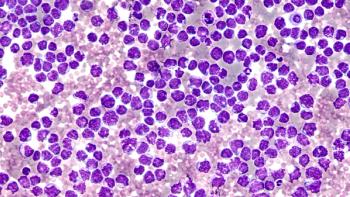
Andamertinib Effective in NSCLC With EGFR Exon 20 Insertion Mutation
Key Takeaways
- Andamertinib showed promising efficacy in NSCLC patients with EGFR exon 20 mutations, achieving a 42.7% ORR in the 240-mg cohort.
- The study reported a median duration of response of 8.7 months and a progression-free survival of 6.2 months.
Previously treated patients with non–small cell lung cancer (NSCLC) saw durable results with andamertinib 240 mg.
Recently published
NSCLC is the most common form of lung cancer in the world, with between 1% and 10% of all cases likely having an
The phase 2 study, the KANNON trial (
Participants needed to be 18 years or older, have a confirmed diagnosis of NSCLC that was locally advanced or metastatic, and have either progressed or had an immunity to previous forms of treatment and had 3 or fewer prior lines of antitumor treatment. Patients who had previously been treated with EGFR TKIs, had an objective response to a third-generation EGFR TKI therapy, or had received vascular endothelial growth factor, monoclonal antibodies targeting EGFR, or human epidermal growth factor receptor 2 were excluded from the study.
Andamertinib was given in 28-day treatment cycles with an initial dose of 320 mg/day that was amended to 240 mg/day. Participants were allowed to have stepwise reductions in their doses to 160 mg and 120 mg per day if clinically approved. Confirmed objective response rate (ORR) maintained for 4 weeks or more from the initial response was the primary end point of the study. Duration of response (DOR), progression-free survival (PFS), and disease control rate (DCR) were secondary end points.
There were 92 patients taking either andamertinib 320 mg or 240 mg, with 89 patients in the full analysis set and 87 in the evaluable analysis set. The median age of the full analysis set was 59 years, and 49.4% were men. A total of 96.6% of the patients had distant metastases.
The 240-mg cohort had an ORR of 42.7% (95% CI, 32.4%-53.0%). This amounted to an ORR of 46.9% (95% CI, 33.0%-60.9%) in those who were naïve to immunotherapy. Patients had comparable ORR both with and without previous therapy with an EGFR TKI or amivantamab (40.0% vs 43.2%). Patients with brain metastases had an ORR of 47.4% (95% CI, 31.5%-63.2%).
A median follow-up of 15.4 months showed that the median DOR was 8.7 months (95% CI, 5.65-11.96). A total of 66.3% progressed or died, and the cohort’s median PFS was 6.2 months (95% CI, 4.63-7.85). The 12-month OS rate was 70.5% (95% CI, 59.51%-79.02%), and 33 deaths had occurred by that point. Median OS could not be calculated. The DCR was 96.7% in those with undetectable circulating DNA (ctDNA) at baseline compared with 81.4% in those with detectable ctDNA.
All participants reported a treatment-related adverse event, with the most frequent being diarrhea (89.1%) and rash (73.9%). There was an incident rate of 40.2% for grade 3 or higher adverse events. Only 2 patients discontinued treatment due to adverse events in the 240-mg cohort.
There were some limitations to this study. Comparing adamertinib to standard-of-care therapies was not possible without a control group and because of the open-label design of the study. Follow-up was short and could limit long-term outcome evaluation. Also, dynamic changes in ctDNA and intracranial response to andamertinib were not evaluated.
The researchers concluded that “andamertinib 240 mg daily demonstrated robust antitumor activity and manageable safety in pretreated advanced EGFR [exon 20]-mutated NSCLC patients.”
References
1. Yang JJ, Mu Y, Wang ZH, et al. Andamertinib in advanced non-small-cell lung cancer with EGFR exon 20 insertions after platinum-based chemotherapy or immunotherapy: results from the phase 2 KANNON study. J Thorac Oncol. Published online November 15, 2025. doi:10.1016/j.jtho.2025.11.008
2. EGFR exon 20 insertion mutation and lung cancer. American Lung Association. Updated October 1, 2024. Accessed November 18, 2025.
Newsletter
Stay ahead of policy, cost, and value—subscribe to AJMC for expert insights at the intersection of clinical care and health economics.













































